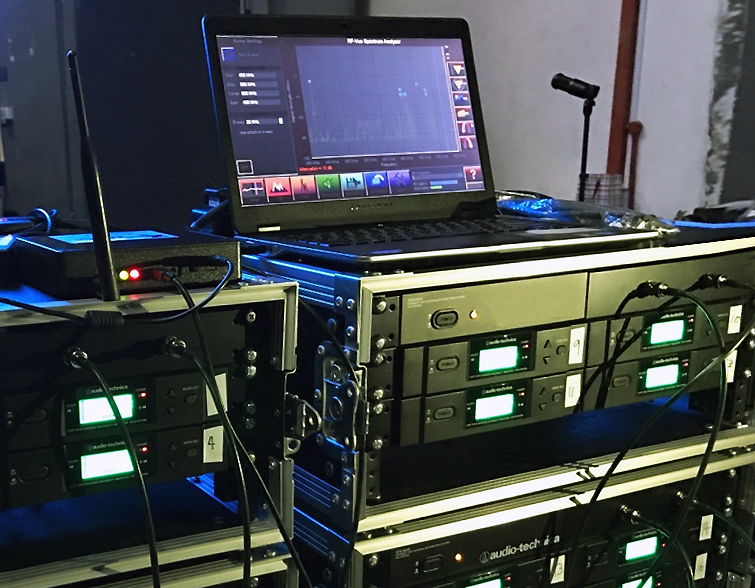
Step 4. If a problem crops up after all has been fine for some time, ask “what’s changed?” At a recent festival gig, for example, I arrived on site and was told by the monitor engineer that he was taking hits on one of the eight vocal mics… on day nine of a 12-day gig.
Looking into the problem, I could see that the receiver was taking hits with the transmitter turned off. I checked that frequency on two spectrum analyzers but couldn’t see anything that would be causing interference, and also evaluated several other things, including a tour around the site to see if any unauthorized news crews were roaming around.
Finding nothing obviously wrong, I turned my attention to the antennas, a pair of the new Shure UA874XA paddles with the gain/attenuation switch. As soon as I walked up to the first one I could see that the RF overload LED was on continuously, and a glance at the “B” antenna showed the same light flashing.
These had been set to 0 dB on set-up day, in consultation with the monitor engineer; however, it turned out that he’d switched in 6 dB of gain on both antennas the night before in an attempt to better pick up the host, who’d been running all over the site with his transmitter. Reverting to 0 dB of gain immediately corrected the overload issue, while the hits were in fact intermod products being generated by the overdriven amplifiers in the antennas. (Think of this situation as an “RF fuzz box” – the overdrive creates additional harmonics.)
Step 5. Listen! Spectrum analyzers are a useful tool, but I find a lot of time wasted in staring at them when our ears can tell us the real problem. Examples:
– On two occasions I’ve had walkie talkie signals get into open receiver channels. In both cases I was finally able to track down the source by listening to the affected receivers, noting a bit of what was said and then asking around “Who just said…?” In one case it was the walkie talkie-based intercom system that the TV crew was using (resolved by moving the Tx antenna off the arena floor into one of the voms), and in the other, the source was the 20-watt repeater from the arena emergency response system. In the latter instance, the signal was only getting into one channel that had its transmitter turned off during sound check, something that wouldn’t be the case during the show.
– I once received a panic call during a changeover, with the issue being that one of the vocal mic channels sounded “gated.” A quick listen at the headphone jack on the front of the receiver told me that the problem was not in the RF domain (i.e., not a frequency problem). Note that this didn’t rule out an actual electronic fault in the output of the receiver (it ultimately turned out to be a stage box issue), but it did prove that changing the frequency would have been a waste of valuable troubleshooting time.
Step 6. Turn off transmitters. If you think a receiver is truly getting interference, the one sure way to tell is to turn off its associated transmitter. If the receiver goes dark (i.e., no RF level indication) and quiet with the Tx off, it’s probably not straight up RF interference.
That said, the problem could still be other issues mentioned above, such as overloading the front end of either the antennas (if they’re active) or the receiver. Similarly, if you turn off the IEM transmitters and the mic receivers clean up, the problem could be something along the lines of the Tx antenna being too close to one or both of the receiver antennas.
Step 7. Keep in mind that RF gear is gear, just like mixing consoles, power amplifiers, loudspeakers, etc. – and sometimes gear breaks down. In the past three weeks alone, I’ve had two different RF intercom systems that were sending intermittent crackling down the comm line. RF interference, right? No, it was loose wiring inside the base stations.
Finally, when someone complains of intermittent noise on IEMs, especially at a rehearsal or sound check, the first thing to ask them before going into full troubleshooting mode is: Where’s your cell phone? It’s amazing how often they just happened to be getting a flurry of text messages when the “interference” cropped up.
